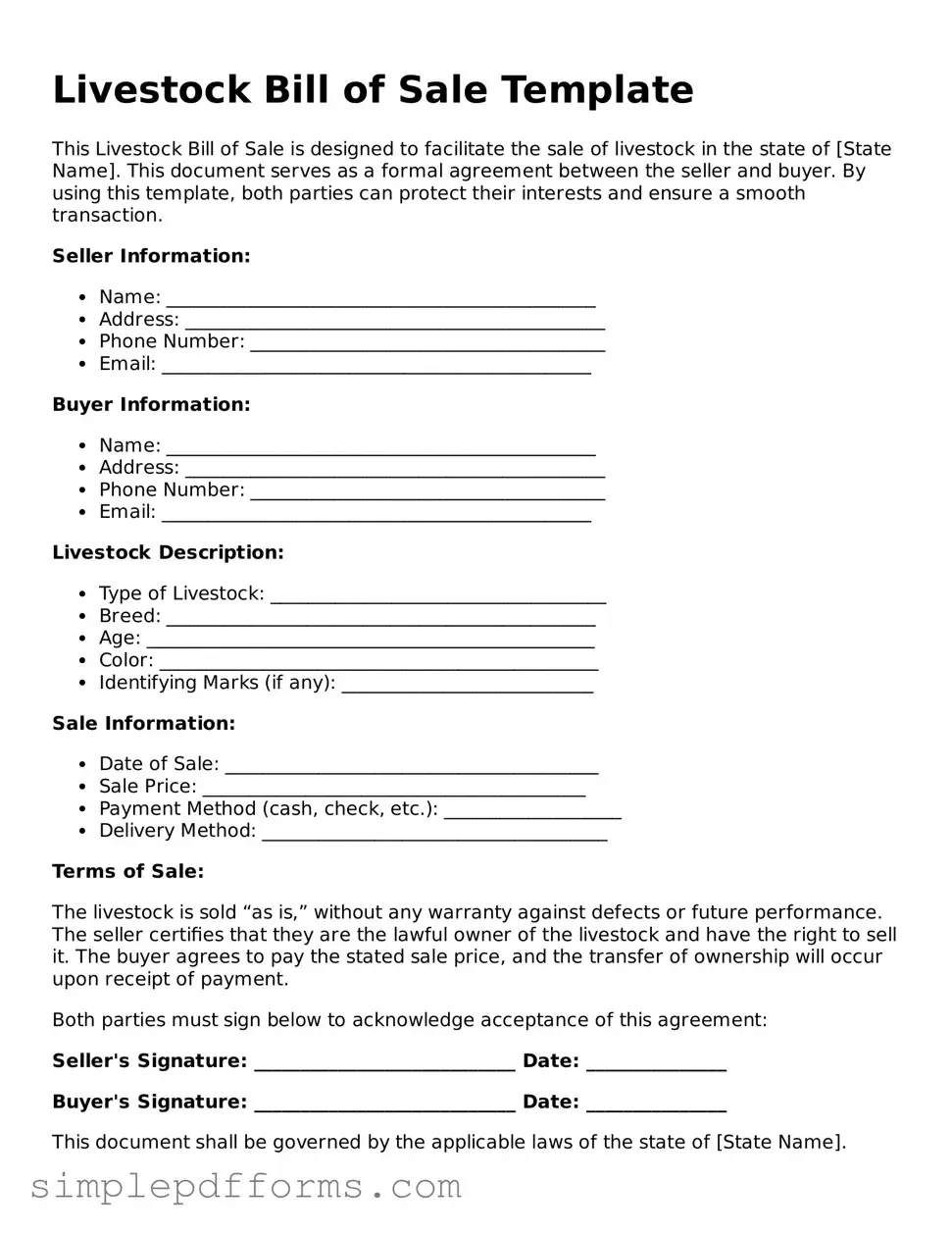Livestock Bill of Sale Template
This Livestock Bill of Sale is designed to facilitate the sale of livestock in the state of [State Name]. This document serves as a formal agreement between the seller and buyer. By using this template, both parties can protect their interests and ensure a smooth transaction.
Seller Information:
- Name: ______________________________________________
- Address: _____________________________________________
- Phone Number: ______________________________________
- Email: ______________________________________________
Buyer Information:
- Name: ______________________________________________
- Address: _____________________________________________
- Phone Number: ______________________________________
- Email: ______________________________________________
Livestock Description:
- Type of Livestock: ____________________________________
- Breed: ______________________________________________
- Age: ________________________________________________
- Color: _______________________________________________
- Identifying Marks (if any): ___________________________
Sale Information:
- Date of Sale: ________________________________________
- Sale Price: _________________________________________
- Payment Method (cash, check, etc.): ___________________
- Delivery Method: _____________________________________
Terms of Sale:
The livestock is sold “as is,” without any warranty against defects or future performance. The seller certifies that they are the lawful owner of the livestock and have the right to sell it. The buyer agrees to pay the stated sale price, and the transfer of ownership will occur upon receipt of payment.
Both parties must sign below to acknowledge acceptance of this agreement:
Seller's Signature: ____________________________ Date: _______________
Buyer's Signature: ____________________________ Date: _______________
This document shall be governed by the applicable laws of the state of [State Name].
